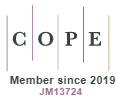Test Sequence Generation for Java7 Fork/Join Using Interference Dependence
DOI:
https://doi.org/10.15415/jotitt.2014.21001Keywords:
Test Sequence Generation, Java7 Fork/Join, JFJFG, Interference DependenceAbstract
Test sequence generation through code is mainly done by using some sort of a flow graph viz. Control Flow Graph (CFG), Concurrent Control Flow Graph (CCFG), Event Graph etc. Approaches that use UML also need flow graph as an intermediate representation for final test sequence generation. In the present approach, a Flow Graph for a new concept i.e. Java7 Fork/Join is constructed and hence, by traversing the graph, test sequences are generated on the basis of all path and all node coverage criteria considering interference dependence. Further, interference dependencies are also represented in the form of a directed graph to aid the analysis of Java7 fork/join programs.
Downloads
References
[2] Bao, X., Zhang, N., & Ding, Z. (2009). Test Case Generation of Concurrent programs Based on event Graph. In Proceedings of Fifth International Joint Conference on INC, IMS and IDC, NCM, 143-149. DoI= http://dx.doi.org/10.1109/NC m.2009.39.
[3] Fork/Join, October 15, 2013.Accessed January 2, 2014: http://docs.oracle.com/javase/tutorial/ essential/concurrency/forkjoin.html.
[4] Grossman, D. Beginner’s Introduction to Java’s ForkJoin Framework. Accessed January 10, 2014:http://homes.cs.washington.edu/~djg/teaching materials/grossmanSpAC_forkJoinFramework.html.
[5] Katayama, T., Furukawa, Z., & Ushijima, K. (1995). event Interactions Graph for Test-Case Generation of Concurrent programs. In Proceedings of Asia Pacific Software engineering Conference, 29-37. DoI= http://dx.doi.org/10.1109/A pSeC.1995.496951.
[6] Katayama, T., Itoh, e., Furukawa, Z., & Ushijima, K. (1999). Test-Case Generation for Concurrent programs with the Testing Criteria Using Interaction Sequences. In Proceedings of Sixth Asia Pacific Software engineering Conference, 590-597. D oI= http://dx.doi.org/10.1109/ ApSeC.1999.809654.
[7] Khandai, M., Acharya, A. A., & Mohapatra, D.P. (2011). A Novel Approach of Test Case Generation for Concurrent Systems Using U mL Sequence Diagram. In Proceedings of 3rd International Verma, V. Arora, V. 12 Conference on Electronics Computer Technology (ICECT), 1, 157-161. DoI= http://dx.doi.org/10.1109/ICeCTeCH.2011.5941581.
[8] Khandai, M., Acharya, A. A., & Mohapatra, D.p. (2011). A Survey on Test Case Generation fromUmLmodel. International Journal of Computer Science and Information Technologies 2(3), 1164-1171.
[9] Kim, H., Kang, S., Baik, J., & Ko I. (2007). Test Cases Generation from Um L Activity Diagrams. In proceedings of eighth ACIS International Conference on Software engineering, Artificial Intelligence, Networking, and parallel/Distributed Computing (SN p D) 3, 556-561. DoI= http://dx.doi.org/10.1109/SNpD.2007.189.
[10] Kundu, D., & Samanta, D. (2009). A Novel Approach to Generate Test Cases from UML ActivityDiagrams. Journal of Object Technology 8(3), 65-83. DoI= http://dx.doi.org/10.5381/ jot.2009.8.3.a1.
[11] Lei, B., Wang, L. & Li, X. (2008). U mL Activity Diagram Based Testing of Java Concurrent programs for Data Race and Inconsistency. In Proceedings of 1st International Conference on Software Testing, Verification and Validation, 200-209. DoI= http://dx.doi.org/10.1109 ICST.2008.64.
[12] Mingsong, C., Xiaokang, Q., & Xuandong, L. (2006). Automatic Test Case Generation for U mLActivity Diagrams. In Proceedings of the 2006 International Workshop on Automation of Software Test (AST ‘06). ACM, New York, NY, USA, 2-8. Do I= http://doi.acm. org/10.1145/1138929.1138931.
[13] Ranganath, V.P., & Hatcliff, J. (2004).pruning Interference and Ready Dependence for Slicing Concurrent Java programs. Compiler Construction, 39-56. DoI= http://dx.doi.org/10.1007/978- 3-540-24723-4_4.
[14] Rapps, S., & Weyuker, E. J. (1985). Selecting Software Test Data Using Data Flow Information. IeeeTransactions on Software engineering Se-11, 4, 367-375. DoI= http://dx.doi.org/10.1109/TSe.1985.232226.
[15] Shirole, M., & Kumar, R. (2012). Testing for concurrency in UML diagrams.SIGSoFT Software engineering Notes37(5), 1-8. DoI= http://doi.acm.org/10.1145/2347696.2347712.
[16] Sun C. (2008). A Transformation-Based Approach to Generating Scenario-oriented Test Cases fromUmL Activity Diagrams for Concurrent Applications. In Proceedings of 32nd Annual IEEE International Computer Software and Applications CompSAC, 160-167. DoI=http://dx.doi. org/10.1109/CompSAC.2008.74.
[17] Yan, J., Li, Z., Yuan,y., Sun, W., & Zhang, J. (2006). BpeL4WS Unit Testing: Test Case GenerationUsing a Concurrent path Analysis Approach. In Proceedings of 17th International Symposium on Software Reliability engineering ISSR e, 75-84. DoI= http://dx.doi.org/10.1109/ ISSR e.2006.16.
[18] Yuan,y., Li, Z., & Sun, W. (2006). A Graph-Search Based Approach to B pe L4WS Test Generation.In Proceedings of the International Conference on Software engineering Advances(ICSeA‘06). IEEE Computer Society, Washington, DC, USA, 14-. DoI= http://dx.doi.org/10.1109/ICSeA.2006.6.
[19] Zheng,y., Zhou, J., & Krause, p . (2007). A model Checking based Test Case Generation Framework for Web Services. In Proceedings of Fourth International Conference on Information Technology ITNG, 715-722. D oI= http://dx.doi.org/10.1109/ITNG.2007.8
Downloads
Published
How to Cite
Issue
Section
License
Articles in Journal on Today's Ideas - Tomorrow's Technologies (J. Today’s Ideas - Tomorrow’s Technol.) by Chitkara University Publications are Open Access articles that are published with licensed under a Creative Commons Attribution- CC-BY 4.0 International License. Based on a work at https://jotitt.chitkara.edu.in. This license permits one to use, remix, tweak and reproduction in any medium, even commercially provided one give credit for the original creation.
View Legal Code of the above mentioned license, https://creativecommons.org/licenses/by/4.0/legalcode
View Licence Deed here https://creativecommons.org/licenses/by/4.0/
 |
Journal on Today's Ideas - Tomorrow's Technologies by Chitkara University Publications is licensed under a Creative Commons Attribution 4.0 International License. Based on a work at https://jotitt.chitkara.edu.in |











